Ever caught your reflection and wondered, “Grade 1 Gynecomastia Treatment, what’s that all about?” Well, you’re not alone. It can feel like staring at a puzzle with missing pieces. This article shows how to get rid of grade 1 gynecomastia.
This post is here to help clear the fog around gynecomastia – a condition that results in enlarged breast tissue in men. Think of it as an unexpected journey where your body detours without asking for directions.
You’ll discover non-surgical ways to manage this change, such as lifestyle adjustments or medication options like selective estrogen receptor modulators. We also touch on surgical approaches when other methods fall short.
So, hang tight if you’re just curious or feeling swamped by all the info about Grade 1 Gynecomastia! We’re about to break it down and make everything clear.
Table Of Contents:
- Understanding Gynecomastia Grades
Understanding Gynecomastia Grades
Gynecomastia, a condition where male breasts enlarge due to an imbalance of hormones, can be physically uncomfortable and emotionally distressing. It’s not just about breast enlargement but also involves factors such as hormone levels and the impact on self-esteem.
What is Gynecomastia?
Gynecomastia occurs when there’s an increase in estrogen (the female hormone) or a decrease in testosterone (the male hormone). This hormonal imbalance leads to excess glandular tissue growth, enlarging male breasts. Though it’s usually harmless, it might indicate underlying health conditions that need attention.
The issue may affect one or both breasts, sometimes unevenly. While certain drugs are known contributors – think steroids for bodybuilding – other causes include natural changes in hormone levels during different life stages like puberty or old age. Mayo Clinic points out that gynecomastia isn’t only about fatty tissue accumulation; true gynecomastia results from increased breast glandular tissue instead of mere fat deposition.
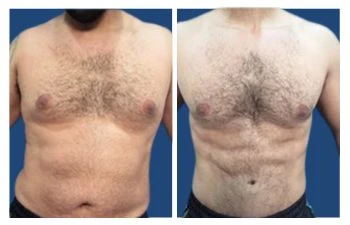
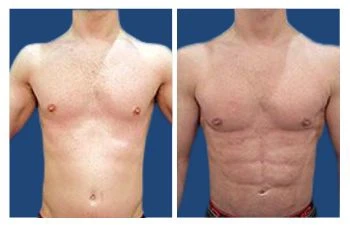
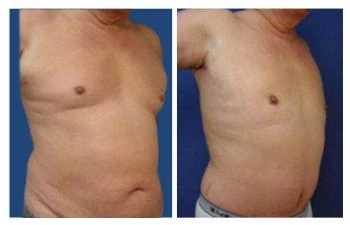
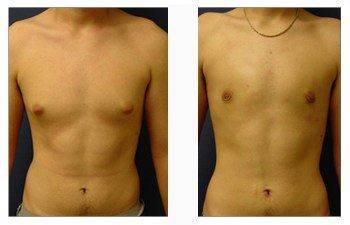
The Grading System for Gynecomastia and the Stages of Gynecomastia
To better understand this condition’s severity and provide appropriate treatment options, doctors use a grading system ranging from Grade 1 gynecomastia to Grade 4 gynecomastia. (Key Stat: 1)
- Grade 1: This is the mildest form characterized by small enlargement without skin redundancy. At this stage, you’re likely dealing with minor puffy nipples rather than significant chest protrusion. This is grade 1 gynecomastia.
- Grade 2: This grade indicates moderate breast enlargement without skin redundancy. In Grade 2, the chest begins to take on a more feminine appearance.
- Grade 3 and Grade 4: These are severe forms of gynecomastia with visible excess skin. At this point, most men seek medical or surgical help as it affects their confidence and daily life.

Key Takeaway:
How a person perceives their body. Understanding the root causes, recognizing symptoms, and seeking professional help for diagnosis and treatment options can go a long way in managing this condition. Remember that you’re not alone; there’s support to guide you through your journey.
Transform Your Life With Gynecomastia Surgery
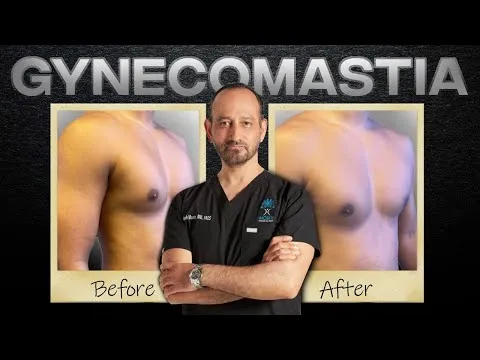
Non-Surgical Treatment Options for Grade 1 Gynecomastia
Surgery might seem like the only way out if you grapple with gynecomastia. But it’s not. Non-surgical methods can also help manage this condition effectively. Let’s explore some of these options.
Lifestyle Changes and Exercise
The first line of action to treat gynecomastia is often a combination of lifestyle changes and exercise. Men may reduce excess fat tissue in their breasts by shedding weight, leading to a more masculine chest contour.
However, while weight loss can reduce the fatty component of male breasts, it does little to address glandular tissue—the real culprit behind true gynecomastia. For that reason, pairing your new fitness regimen with strength training exercises targeting the chest area could prove beneficial.
A well-rounded approach combining cardio workouts for overall body fat reduction and specific exercises such as push-ups or bench presses designed specifically for pectoral muscles will offer maximum benefits. Here are some great tips on how to start exercising right.
Medication Options for Grade 1 Gynecomastia
In addition to adopting healthier habits through diet and exercise regimes, medications present another avenue worth exploring when dealing with gynecomastia—particularly those drugs known as aromatase inhibitors or selective estrogen receptor modulators (SERMs).
Aromatase inhibitors, typically used in treating breast cancer (source), block the enzyme aromatase, which converts androgens into estrogens. This way, these medications can lower estrogen levels in men suffering from gynecomastia.
Selective Estrogen Receptor Modulators like Tamoxifen or Raloxifene also yield promising results (study). SERMs bind to estrogen receptors in breast tissue, preventing the hormone’s effects without lowering its level. This action helps reduce excess glandular tissue characteristic of gynecomastia.
But let’s remember that…
Key Takeaway:
Don’t fret if you’re battling gynecomastia – surgery isn’t the only option. Embrace lifestyle changes and targeted exercises to shed excess fat tissue in your chest. Pair this with strength training for best results. Also, explore medication options like aromatase inhibitors or SERMs that help reduce estrogen levels and glandular tissue.
Surgical Treatment for Grade 1 Gynecomastia
When lifestyle modifications, exercise, and medications have not achieved the desired outcome for reducing gynecomastia symptoms, it could be time to look into surgical treatment. The goal of surgery is simple – remove excess breast tissue and fat from your chest.
Understanding Male Breast Reduction Surgery
A qualified gynecomastia surgeon uses their expertise to effectively address both glandular tissue enlargement and fatty tissue buildup in male breasts. They use a variety of techniques depending on the severity of the condition.
The procedure begins with an incision along the inframammary fold or around the areola where glandular breast tissues reside. Then, they remove this unwanted mass that’s causing your chest area distress. It’s like decluttering a room – only instead of clothes or furniture, we’re talking about excess breast tissue here.
In some cases, removing just these tissues only partially solves our problem; some sagging skin could be left behind due to its previous expansion. Next comes trimming any excess skin to achieve a more masculine contour, like removing loose carpet edges after moving heavy furniture around.
To round off this whole process, imagine painting over a wall crack without filling it first—not ideal, right? Likewise, if removed tissues beneath your skin surface create significant space (think deflated balloon), surgeons often opt to reposition the remaining glands or use filler materials (like fat grafts) so everything looks natural again.
Grade 1 Gynecomastia Surgery Cost and Risk
You may be wondering about the cost of this operation. Well, it’s no secret that medical procedures can dent your wallet. But considering the life-changing benefits—improved body image, increased confidence—it may be worth it.
Remember, we’re big fans of facts and stats over here. This helps in understanding grade 1 gynecomastia.
Key Takeaway:
When diet, exercise, and medication don’t cut it for gynecomastia symptoms, surgery could be your next move. The goal is to eliminate unwanted breast tissue and fat to give you a more masculine shape. This involves making cuts, removing extra tissues, moving around the remaining glands, or using fillers for a natural look. Yes, this may affect your wallet.
Recognizing Symptoms and Diagnosis of Gynecomastia
Gynecomastia can be subtle, but it’s not silent. It comes with signs that you should pay attention to.
Symptoms of Gynecomastia
The most common symptom is a lump or enlargement in the breast area, which could either be painful or tender to touch. This swelling might affect one or both breasts and may start as a small disk-like growth beneath the nipple before spreading outwards.
In some cases, there might also be skin redundancy around your chest area due to excessive fatty tissue accumulation. A slight puffiness around your nipples isn’t unusual either because excess glandular tissue builds up there.
It’s important to remember that these symptoms don’t necessarily mean you have gynecomastia – they could also indicate other health conditions. So make sure not to self-diagnose.
How Is Gynecomastia Diagnosed?
To diagnose gynecomastia accurately, doctors often begin by asking about any changes in medication use or lifestyle habits like diet and exercise routines. They’ll want to know if you’ve been experiencing weight fluctuations recently since being within a healthy weight range can sometimes alleviate mild cases of gynecomastia.
Your doctor will likely perform a physical examination next, checking for lumps in your breast gland tissues using careful palpation techniques while noting any potential asymmetry between the left and right sides of your chest wall. Studies suggest this manual method has an accuracy rate upwards of 90% when performed by trained professionals.
Blood Tests & Imaging
Blood tests can be administered to assess hormone concentrations following a physical exam. High estrogen levels and low male hormones or testosterone can cause gynecomastia.
Ultrasound or MRI scans may be performed to provide a more in-depth look at the breast tissue.
Key Takeaway:
Spotting Gynecomastia: Look out for breast enlargement, tenderness, or lumps, as these could be signs of gynecomastia. But remember – self-diagnosis isn’t safe. A professional assessment involves reviewing your lifestyle habits and medications, conducting a physical examination (which has up to 90% accuracy), and possibly running further tests if needed. Gynecomastia: what are the signs and symptoms? Keep reading.
Conclusion: Grade 1 Gynecomastia Treatment
Unraveling the mystery of Grade 1 Gynecomastia Treatment doesn’t have to be daunting. Now, you’re armed with knowledge about what causes gynecomastia and how it’s graded.
You’ve discovered that lifestyle changes and exercise can help reduce excess breast tissue. Medications like selective estrogen receptor modulators are crucial in non-surgical treatment strategies.
Yet sometimes, Gynecomastia surgery might be needed to remove stubborn glandular or fatty tissues when other methods don’t work out. Before making any decision, awareness of potential risks and costs associated with surgical procedures is key.
Remember, recognizing symptoms early on leads to more effective treatments – so always watch for unusual body changes! Your health matters most; never hesitate to seek professional medical advice if something feels off.
Expert Gynecomastia Surgeon for Grade 1 Gynecomastia Surgery in Los Angeles
Dr. Moein is a highly skilled and experienced gynecomastia surgeon specializing in Grade 1 gynecomastia surgery, offering men a tailored approach to address this common yet often overlooked condition. With an exceptional background in cosmetic and reconstructive surgery, Dr. Moein utilizes advanced techniques to deliver precise and natural-looking results, helping patients restore their confidence and achieve a more masculine chest contour. His expertise and dedication have made him a trusted name in gynecomastia surgery across Los Angeles.
Find Out More: Gyno Grades

Dr.Babak Moeinolmolki
LA Cosmetic Surgeon Dr. Moein is board-certified by the American Board of General Surgery.
